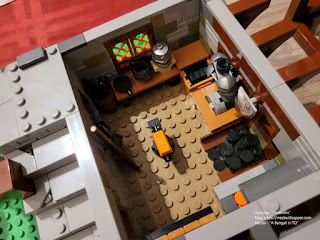Why East Pakistan Became Bangladesh (Part 3)
Part 1- Economic Exploitation of the East
Part 2: Language and Culture
Part 3: Cyclone Bhola
The Final Part (Part 4): Military and Politics
In this series of posts, I will highlight just a few of the many reasons why East Pakistan seceded from Pakistan and became Bangladesh.
Part 3: Cyclone Bhola
Is it possible for a hurricane to physically split apart a nation?
In this segment I want to highlight the effect of Cyclone Bhola on East Pakistan and the subsequent events. Before that, let's set the context.
Ever since 1947, East and West Pakistan has been uneasy bedfellows. Initially the fear of Muslims being dominated by a Hindu India kept the two wings together. By 1970, the military had been ruling Pakistan with an iron fist for 12 years. Strikes, riots and civil unrest was a daily fact of life. Elections were promised but delayed due to floods. And then came Tropical Cyclone Bhola.
Bhola remains the deadliest tropical cyclone ever recorded, and one of the deadliest natural disasters.
Bhola is often compared to the 2004 Indian Ocean Tsunami in its devastation:
- More than half a million people in East Pakistan lost their lives.
- Over 3.6 million people directly affected by the cyclone.
- Total damage is over $86.4 million (1970 USD, $450 Million 2006 USD).
- 65% of the fishing capacity of the coastal region was destroyed
- Survivors were at risk of cholera, typhoid and small pox for upto three months.
- People ate tree roots and drank water from ponds in which corpses were rotting because they had no other choice.
The Response of the Pakistan Government
Faced with such a catastrophic natural disaster, the government of Pakistan had a moral duty, and a golden opportunity, to demonstrate to the citizens of East Pakistan that Pakistan cared about them and their well being. Instead, everything that could go wrong, did go wrong.
Whether by a genuine lack of concern from West Pakistan, or just genuine incompetency, or likely some combination of both, the response of the government to the disaster was a disaster in itself:
- About 3 weeks before the Bhola Cyclone there was a much smaller cyclone that had hit on October 23rd. The Pakistan government sent out evacuation orders, however, the storm dissipated. Because of this previous cyclone, government officials decided to not send out evacuation orders for Bhola.
- The government issued a warning of the approaching hurricane ... AFTER the hurricane had already made landfall, leading to people caught unaware.
- Only one military transport aircraft and three crop-dusting aircraft were assigned to relief work by the Pakistani government. They blamed India for not allowing flights across Indian air space, a charge the Indian government denied.
- A pesticide company had to wait two days before it received permission for two of its crop dusters, which were already in the country, to carry out supply drops in the affected regions.
- The Pakistani government only deployed a single helicopter to relief operations.
- Pakistan and India, due to their rivalry, did not share weather data which prevent warnings from given to East Pakistan coastal areas.
- The hurricane struck land on Nov 12, but the leader of Pakistan, Yahya Khan, only visited the areas on Nov 16. Despite criticism of efforts, he only took charge of relief operations on Nov 24.
- A reporter for the Pakistan Observer spent a week in the worst hit areas in early January and saw none of the tents supplied by relief agencies being used to house survivors.
- West Pakistani newspapers constantly downplayed the affects. Despite receiving reports of 500,000 dead, the Pakistan Observer on Nov 13 had the headline: "50 feared lost".
As the magnitude of the disaster became more and more clear, as did the inadequate response by the government, anger and unrest spread among the survivors. All political parties of East Pakistan issued a united statement harshly criticizing the government of Pakistan. Each politician wasted no time in telling the people how the Centre had bungled the efforts.
The entire political atmosphere had now changed dramatically.
No longer were East Pakistanis content with a return to democracy. With the disregard shown by the Yahya government towards the victims of the cyclone, not only did East Pakistani politicians demand the leader's resignation, but people openly called for what had hitherto been left unsaid: the breakup of East and West Pakistan. It was now only a matter of when.
To Be Continued ...
4. Zeitlin, Arnold (January 13, 1971). "Pakistan Cyclone Relief Still Jumbled and Inadequate". Long Beach Press-Telegram. Associated Press. p. P-11. Retrieved April 15, 2007 – via
Newspapers.com5. Durdin, Tillman (March 11, 1971). "Pakistanis Crisis Virtually Halts Rehabilitation Work in Cyclone Region". The New York Times. p. 2.

























